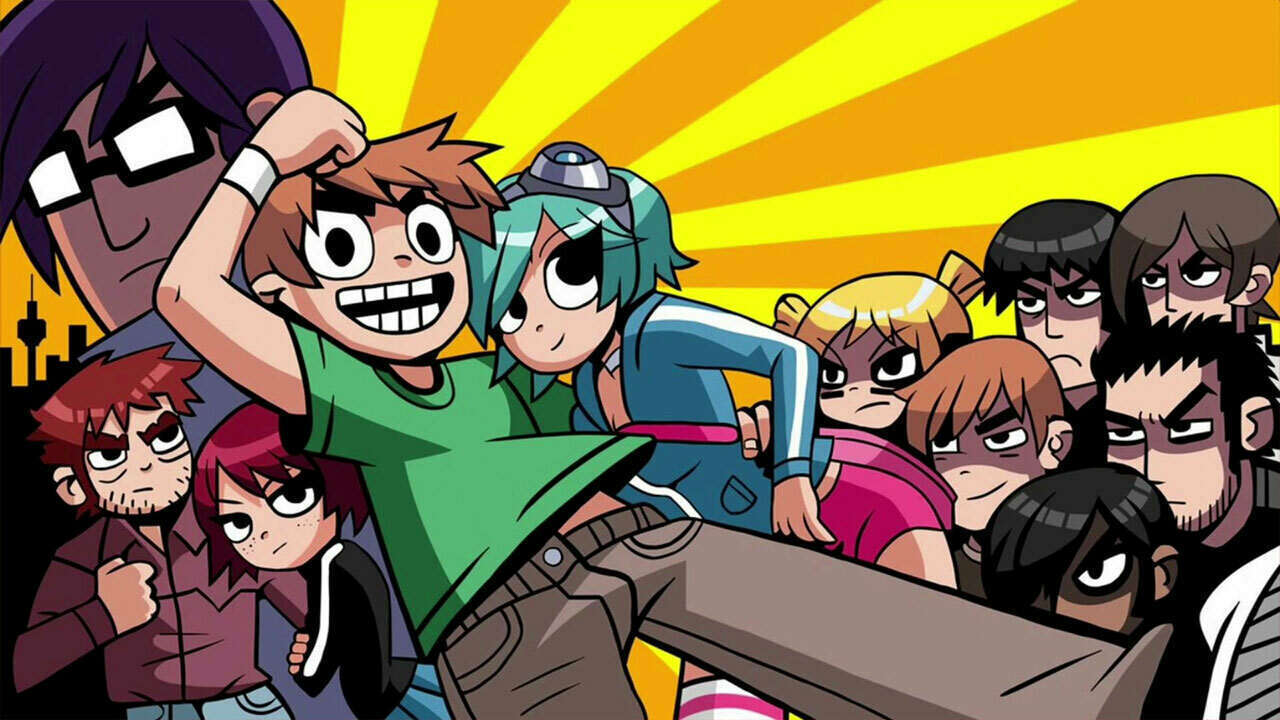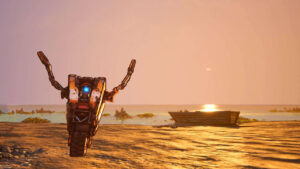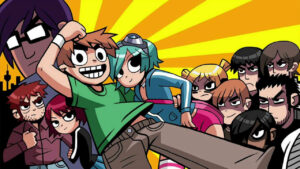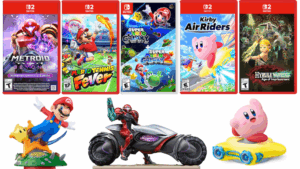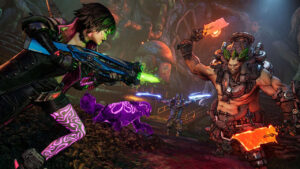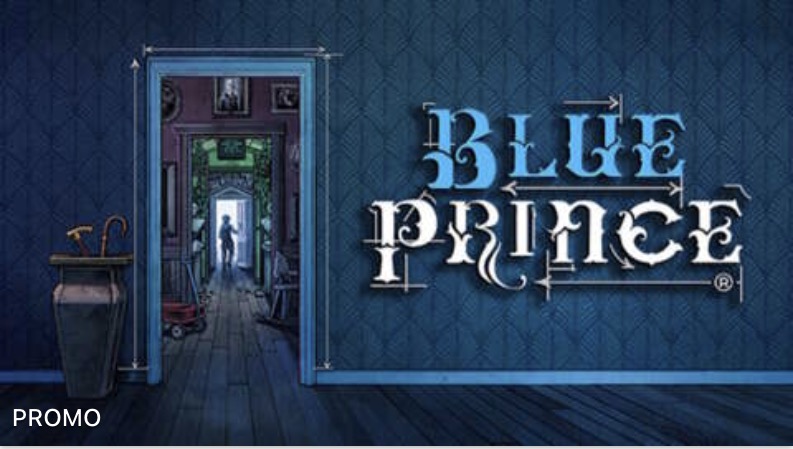Scott Pilgrim vs The World: The Game celebrated its 15-year anniversary on August 10, 2025. Below, we speak with the developers of the original game about how it came to be and its enduring legacy.
Trust an elder millennial on this one: The longer you live, the more you start to see the media of your youth reflected in a weird, recursive funhouse mirror. The old Grandpa Simpson “It’ll happen to you!” meme is not just a perfect reaction to have here, but a perfect example. It’s a famous meme, born from a show that is now mostly known by younger generations as an infinite meme factory, from a scene that was directed at Gen-Xers with nostalgia for the 1970s, by a character lamenting how he was cool in the ’50s, and nostalgia for the ’40s being the actual intended joke.
Scott Pilgrim now occupies a similarly strange place in pop culture. Back in the mid-2000s, the original graphic novels were to old-school video games, anime, and Canadian indie bands what Kevin Smith’s worship of Star Wars and Marvel comics were to Gen X. Plenty of readers could latch onto the story of a nerdy slacker–the titular Scott–dating Ramona Flowers, a much cooler person with a checkered past, and Scott having to reckon with said checkered past by fighting her seven evil exes. The emotional honesty injected into the story by its creator, Bryan Lee O’Malley made it appeal to the folks who may never have picked up a controller, the folks who simply saw an extremely well-drawn, well-written fantastical slice-of-life indie book. Scott still had to deal with getting a job, paying his rent, and generally having to become an adult. He just happened to do so while speaking to nerds in a whole other secret language of nostalgic metaphors.
This is ultimately the thing that made Edgar Wright probably the only reasonable pick to handle a film adaptation. Wright had been speaking the same language through his work since the early 2000s with Spaced, Shaun of the Dead, and Hot Fuzz. This is a man who staged a climactic argument between roommates on Spaced as a round of Tekken 3, had Queen’s Don’t Stop Me Now as the backdrop for a zombie getting beaten with pool cues, and used the classic tropes of both zombie films and big Hollywood action movies to examine the whole idea of how men evolve within the world.
There’s an art to using pop culture as shorthand. In Ready Player One author Ernest Cline’s hands, it’s cheap and meaningless, because it’s the validation of obsession, rather than saying anything about the people obsessed. In Wright’s hands, it’s charming and effective, because it’s using pop culture to accentuate the emotions that are already there.
And thus we got Scott Pilgrim vs. the World in theaters in 2010, a still-incredible piece of work, not just as a faithful adaptation of the novels, but a still-staggering achievement in audiovisual storytelling altogether. Its closest visual analogue is the Wachowski Sisters’ Speed Racer. You can probably count everything else in that particular echelon on one hand, and two of those slots are Spider-Verse movies. Unfortunately, that’s for good reason. Despite the incredible filmmaking, the zeitgeisty non-stop comedy, a fantastic indie rock soundtrack, the heartfelt story, a rock-solid critical reception, and a cast that would go on to become some of the most acclaimed and recognized actors of a generation, the film was actually a major flop. It opened to a $10 million opening weekend and ended at $30 million, only barely making back half its $60 million budget. It was dead on arrival. Turns out, the film has more in common with the Wachowskis’ Speed Racer than the visual language. It was hard sell to an unsavvy casual audience unaccustomed to hyperkinetic maximalist storytelling. Universal’s marketing department clearly felt the same; the film was sold as a musical with fights instead of songs. It’s not a wrong representation of the film, but it’s still difficult to sell.
At the same time Scott Pilgrim: The Movie was floundering in theaters, in real-life Canada, Scott Pilgrim was fighting a different fight in a different medium.
Jean-Francois Major is one of the co-founders of Tribute Games, the folks behind a slew of old-school pixel art throwback titles such as Mercenary Kings, Panzer Paladin, Teenage Mutant Ninja Turtles: Shredder’s Revenge, and the upcoming Marvel Cosmic Invasion. But back in 2010, he was part of a development team at Ubisoft that decided to make the company take a big risk.
“We mostly focused on Game Boy Advance titles: Teenage Mutant Ninja Turtles, Open Season, Star Wars, mostly licensed games,” Major said, in a brief interview with Gamespot over Zoom. “At some point we found out there was gonna be a movie made on Scott Pilgrim. And we thought, why doesn’t Ubisoft make a game based on the [intellectual property]. So we decided to make a pitch and get it cleared through Universal. That was actually the last pixel art game Ubisoft tackled. We kept it retro-looking, kind of a follow up to our Game Boy Advance games.”
For reference, the bigger games that Ubisoft would release around that time included Splinter Cell: Conviction, Assassin’s Creed Brotherhood, Prince of Persia: The Forgotten Sands, and Ubisoft’s first go-around with a game based on James Cameron’s Avatar. The closest thing to a retro game in Ubisoft’s portfolio at that time is an entirely forgettable TMNT: Turtles In Time remake. So how did Major and his team manage to slip a pixel art 2D game into the company’s slate at the time?
“I don’t know how to answer this politely,” Major said with a laugh. “I think it wasn’t really a project that was fully understood at Ubisoft. Luckily, they kind of let us do what we wanted, and didn’t ask too many questions. They were more focused on their bigger titles. Ubisoft was shifting away from [pixel art games], and that was kind of our last go. Our whole team was sent to work on more AAA games, and that wasn’t really our passion. It was why we ended up founding Tribute.” Bryan Lee O’Malley had similar mixed feelings, saying in our brief interview that “they didn’t really give us the budget to do everything we wanted to do,” and noted that the finishing touches for the game were ultimately farmed out to Ubisoft’s Chinese studio.
Still, as the film was in production, Majors and his team got to work on what would become Scott Pilgrim vs. the World: The Game, which was, indeed, a rare sight in 2010: a side-scrolling 2D beat-’em-up that felt more like River City Ransom on NES or the original Turtles In Time than the character-action titles of that moment in time. The art style–which had Bryan Lee O’Malley dividing his time between working on the film and providing original artwork embellished by famed pixel artist Paul Robertson–would take most of its cues from the original graphic novels, while still recreating specific beats from the film, including a very cute pixel art version of Edgar Wright directing Lucas Lee’s movie at Casa Loma. In return, pixel art Scott would get a cameo on the big-screen. The game character appeared as the icon for Scott’s 1-Up after defeating the Katayanagi Twins, as well as in a post-credit bit with Pixel Scott getting to throw a few brick-busting punches, a shout-out that was a complete surprise to Majors and his team.

The game also had an extra ace in the hole with its amazing, eclectic soundtrack from chiptune band Anamanaguchi.
“Our style was a natural fit for the general vibe,” said lead songwriter Peter Berkman in an interview with PlayStation Blog back in 2021, “but it was a lot of fun to flex and adapt for certain moments that a ‘band playing shows’ doesn’t normally get to do. Like a bossa nova shop theme, or boss songs.”
His co-writer, Ary Warnaar, agreed. “There were a handful of prompts that took us out of our comfort zones,” Warnaar said. “Some of those styles were definitely just for the game, but others started to shape sounds that became a bit more normal to us. Dance-tempo four to the floor tracks were a pretty new thing to us back then!”
The game was at least more of a success story than the film, selling nearly 150,000 copies within its first year, according to research firm FADE. The problem there was that the success would be, unfortunately, short-lived. Licensing problems aren’t new for video games–even as much as the industry loves its remakes and remasters, there are licensed games across the expanse of the medium that may never see the light of day ever again because of either the cost or logistics of nailing down the IP. Scott Pilgrim vs. the World was no different, and in 2014, the game was delisted from the PlayStation Network and Xbox Live Arcade because of a complete mess of licensing problems between Ubisoft, Universal Pictures, and ABKCO Music, who owned the rights to Anamanaguchi’s soundtrack.
“We didn’t have Limited Run back then, or smaller physical publishers to make sure we have a physical copy that can be resold and kept alive,” said Majors. “There was also no release on Steam, that was also an issue.”
That could have been game over in terms of Scott Pilgrim’s full-court press into culture at large. But there was a continue attached to that failure.
There’s a famous story Edgar Wright tells about finding out the film flopped on opening weekend: “Monday morning, [Universal’s chief of marketing] Michael Moses sent an email with three words. It was one of the sweetest emails I’ve ever gotten from anybody in the industry. It said, ‘Years, not days.'”
That email should be nailed to the door, Martin Luther-style, of anyone daring to make art in the 21st Century. Yes, smash hit, immediate success is good, especially as far as the people who bankroll art these days are concerned. But immediate success is a flower. Lasting impact, legacy, and culture are trees.
Despite the film’s initial failure in theaters, it soon became a cult classic in the making through word of mouth, with numerous high profile creators singing its praises. The film quickly became a midnight-movie mainstay at Quentin Tarantino’s New Beverly theater in Los Angeles. The home release in 2011 was also a minor hit, managing to be the first film to knock Christopher Nolan’s Inception off the top of the sales charts. More than that, the film’s visual language–incorporating elements from video games, comics, and manga– starts becoming commonplace in media not long after. That particularly shows in Edgar Wright’s own work moving forward, with the effects-heavy production playing a big influence in how he’d handle effects in The World’s End and editing around music in Baby Driver. Ultimately, the film cracked open a door that Marvel in particular would kick down entirely in the years that followed, leaning heavier on embracing the wilder and weirder aspects of comic book storytelling, compromising less towards Hollywood conventions of four-quadrant blockbusters. The kinetic wall-of-visual-stimulation style of storytelling that nerds had been immersed in for years is now very much mainstream.
For the game’s part, Scott Pilgrim was already riding a wave of nostalgia for 8- and 16-bit style aesthetics, and the game’s eventual disappearance from storefronts only drove its popularity further. But also, while there had been occasional blips on the radar as far as old-school beat-’em-ups, Scott Pilgrim showed there was still plenty of life in the genre. Not long after, titles like Double Dragon Neon, Dragon’s Crown, and Charlie Murder joined the side-scrolling beat-’em-up roster, paving the way for the true renaissance of the genre when the likes of River City Girls and Streets of Rage 4 hit the scene.
The story is, indeed, “years, not days.” In 2020, the film’s popularity warranted an outright media blitz celebrating its modern classic status. The original cast reunited during the COVID pandemic to do a read-through of the entire script, only emphasizing the now-accumulated star power of its cast. The popularity of the stream–currently sitting at over 3 million views on Youtube. The film got a high-profile theatrical re-release in 2021 just before a 4K Blu-Ray dropped. That same year, a miracle happened: Whatever licensing problems had been keeping the game off shelves had been resolved, and it was re-released that January, with a physical release from Limited Run selling 25,000 copies in the first three hours after its announcement.


It’d be easy to chalk all that up to nostalgia becoming a cottage industry on a scale even previous generations could never imagine. But something very different was happening with Scott Pilgrim in those early days of the pandemic.
“I’d moved on to other things, but Scott Pilgrim keeps calling me back,” said O’Malley. “The fanbase just keeps growing. They’re getting younger. I feel like I owe them more and more each year.”
That sense of responsibility led to what eventually became Netflix’s Scott Pilgrim Takes Off. Except the nostalgia is a little different here. In 2010, Universal promoted the Scott Pilgrim film with a 4-minute short on Adult Swim, with Michael Cera, Mae Whitman, and Jason Schwartzman voicing a fully animated scene from the graphic novel. It was a perfect fit on the same network that quietly introduced a generation to Naruto and Cowboy Bebop. It would also only air once, the night before the film was released.
In 2023, Scott Pilgrim Takes Off became a 10-episode anime splashed across the front page of the world’s biggest streaming platform, sharing promo space with the absurdly popular Delicious In Dungeon, and an anime adaptation of Castlevania. In 2025, it’s one of the first things Netflix recommends after K-Pop Demon Hunters rolls credits. Scott Pilgrim is no longer a nostalgia trip; it’s part of the zeitgeist.
“You’d expect the audience for Scott Pilgrim would be all 45-year-olds at this point,” O’Malley said, “but I have an influx of 15-year-olds coming to conventions these days, and they don’t see the references the same way… They’re more interested in the characters themselves, and they’re the flashpoint, the thing they connect to most.”
It’s with that angle in mind that Scott Pilgrim Takes Off forges its own path. The first episode is the animated adaptation of the graphic novel everyone expected, right up until the fight with Ramona Flowers’ first Evil Ex, Matthew Patel. Scott fights him…and loses.
The rest of the series then becomes Ramona Flowers’ story. Her guilt about “dabbling in being a bitch” costing a new partner his life guides the series into a very different direction from the original, a direction that can only come from 15 years of hindsight and maturity. As opposed to most plays for nostalgia, Scott Pilgrim hasn’t just grown up with its audience, but adapted to a changing world, while ensuring that even the people who have no attachment to the graphic novels or film have an entry point.
That entry point turns out to be one far more interested in Ramona being fascinatingly messy, Scott being frozen in time, and how pathetic that stagnation can be if left unchecked. Scott Pilgrim is no longer a reflection of the past, but a living examination of it. As the show ends up proving, nostalgia can be good, but a version of a person that’s still open to change and growth is absolutely the most healthy version of that person.
That same need for growth and change wound up leading Jean Majors and the folks at Tribute Games to the next step in Scott and Ramona’s journey: Tribute Games’ Scott Pilgrim EX.
“[Bryan and I] have been friends ever since the original game, and when we started Tribute we always kept in contact,” Majors said. “Over the years, after Mercenary Kings, we would reach out and ask if we could have a second stab. Things didn’t pan out, but over the years, we kept harassing him. When the anime was announced, we gave it another go…and that’s when the discussions became more serious.”
Scott Pilgrim Vs. The World: The Game Complete Edition – Official Launch Trailer
Size:
Want us to remember this setting for all your devices?
Sign up or Sign in now!
Please use a html5 video capable browser to watch videos.
This video has an invalid file format.
Sorry, but you can’t access this content!
Please enter your date of birth to view this video
By clicking ‘enter’, you agree to GameSpot’s
Terms of Use and Privacy Policy
A simple sequel to the Scott Pilgrim game would be an easy slam dunk in today’s marketplace, given how successful the re-release was and the ubiquity of retro beat-’em-ups these days, but that same change and growth that guided Scott Pilgrim Takes Off extended to the new game.
“When we first pitched Scott Pilgrim EX, we shared our vision of the target audience, and Bryan told us, ‘You need to revisit those, I don’t think that’s totally accurate,'” Majors said. “We [initially] targeted older [audiences], because retro games have an easier reach for people who lived through it, but that’s no longer true. We noticed with [TMNT: Shredder’s Revenge] that it reached this massive audience that was younger, because the people who grew up playing Turtles In Time wound up playing it with their kids. We were missing out on the younger audience who grew up with the series and movie getting its second wind, and we saw it with the direction the animated series went. “
With that in mind, Majors said, much like Scott Pilgrim Takes Off, EX will grow up a little more. That especially pertains to where the challenge for the new game will be coming from this time around.
“The production [on the original Scott Pilgrim game] was so short we didn’t second-guess [the difficulty],” he said. “We did some minor playtesting, but we probably should’ve done a better job making sure it wasn’t too hardcore. One thing we’re improving is listening to the feedback from the original game, because one of the things they thought dragged the game down was the grinding.”
“[Another thing] that will surprise people is it’s not a sequel, or even a simple beat-’em-up either,” Majors continued. “We’re kind of starting from scratch, thinking about how to structure the game the way we wanted the original to be. It’s not as linear, it’s more open-ended, Link to the Past-style. You have to [explore the world] a bit more to complete quests. We’ve adopted more of a River City Ransom structure.”
For his part, Bryan Lee O’Malley is still heavily involved with EX.
“I just wanna make a video game,” he said, laughing. “Just, something new that reminds me of all the games I played growing up.”
Not that there’s anything wrong with that at all. But O’Malley is more than aware of the ride Scott Pilgrim has gone on, from a little black-and-white indie comic born of nostalgia and a love of the games, movies, and bands of his youth, to a longtime favorite for multiple generations of nerds and weirdos who have grown up and out over time–a fond memory born of fond memories.
“If they’re 20 now, they were born around the time all this was starting, when I was obsessed with the late ’70s, early ’80s,” he said. “I feel like every generation has that ’20 years behind you’ nostalgia, ‘What was the world like before the one I was born into?’ To them, Scott Pilgrim’s become this sort of rosetta stone. It’s a map to an older version of pop culture.”

